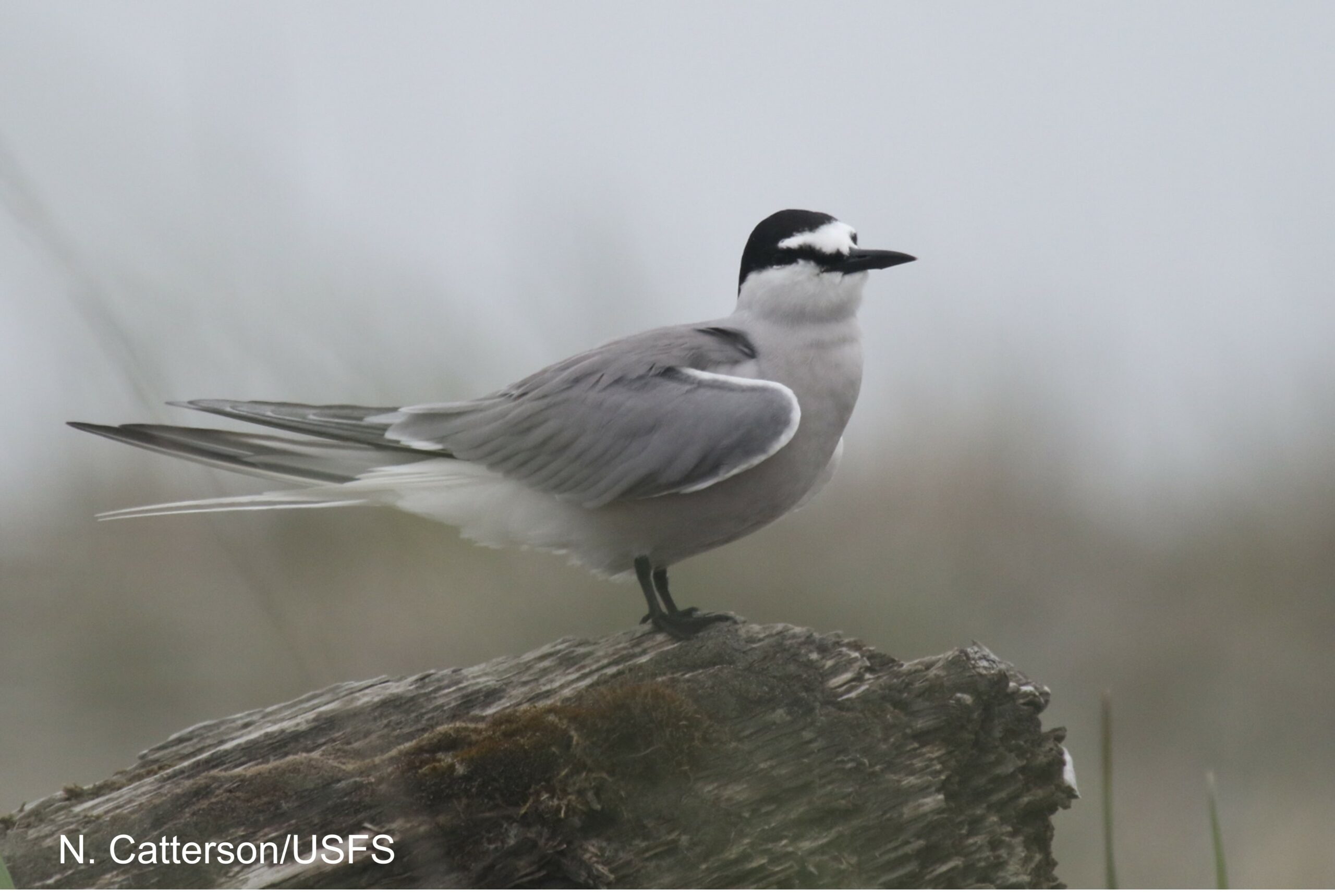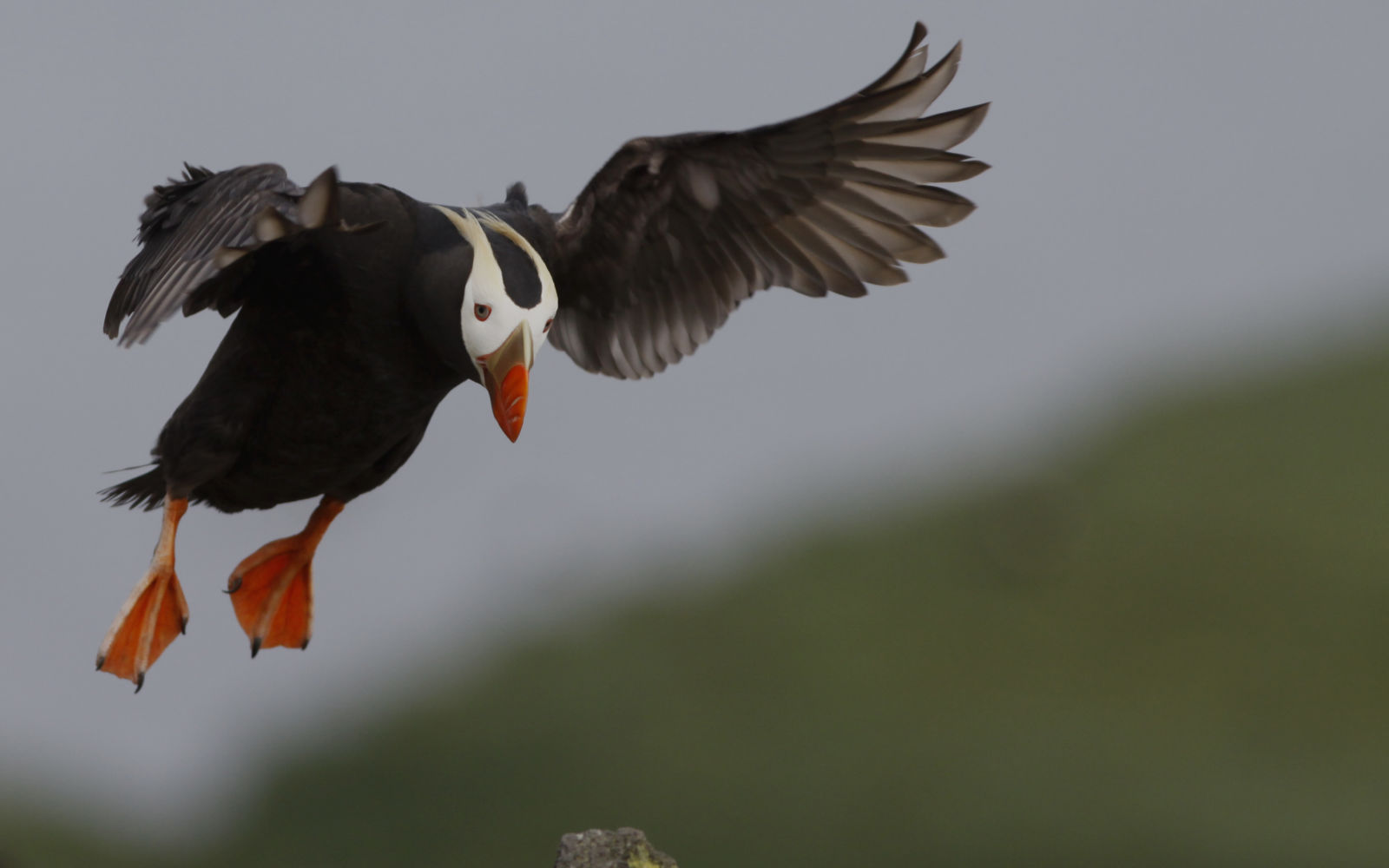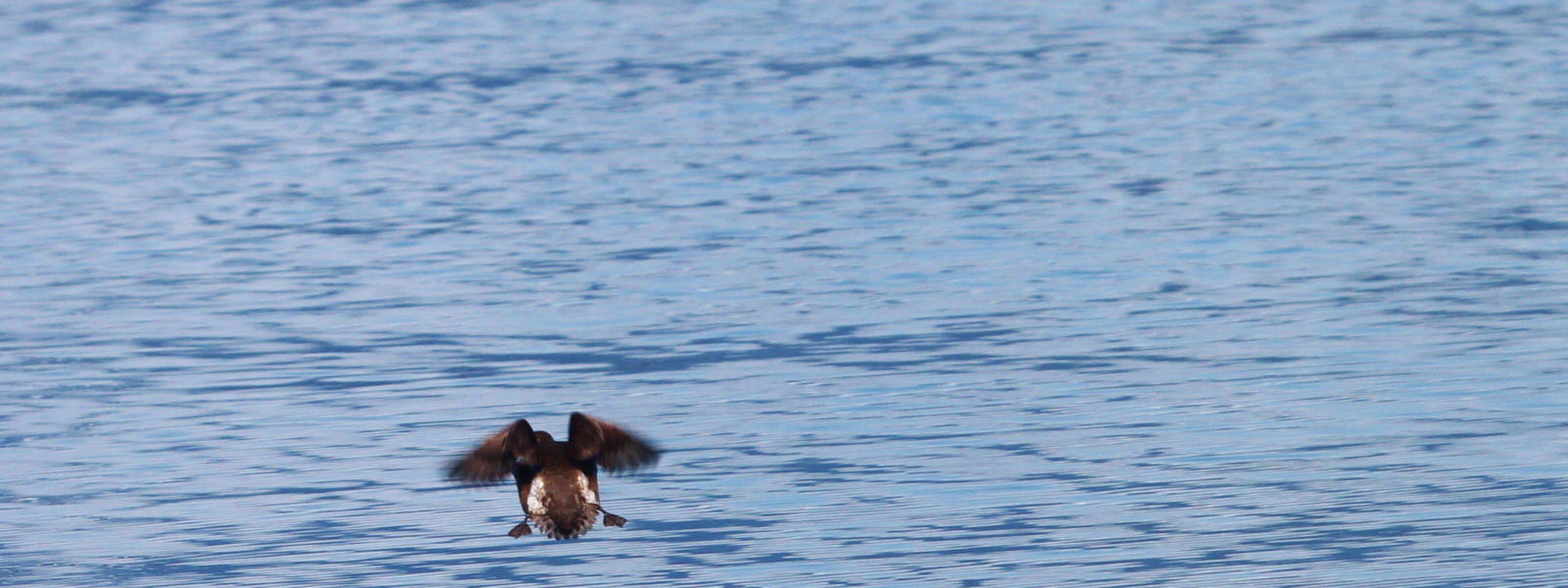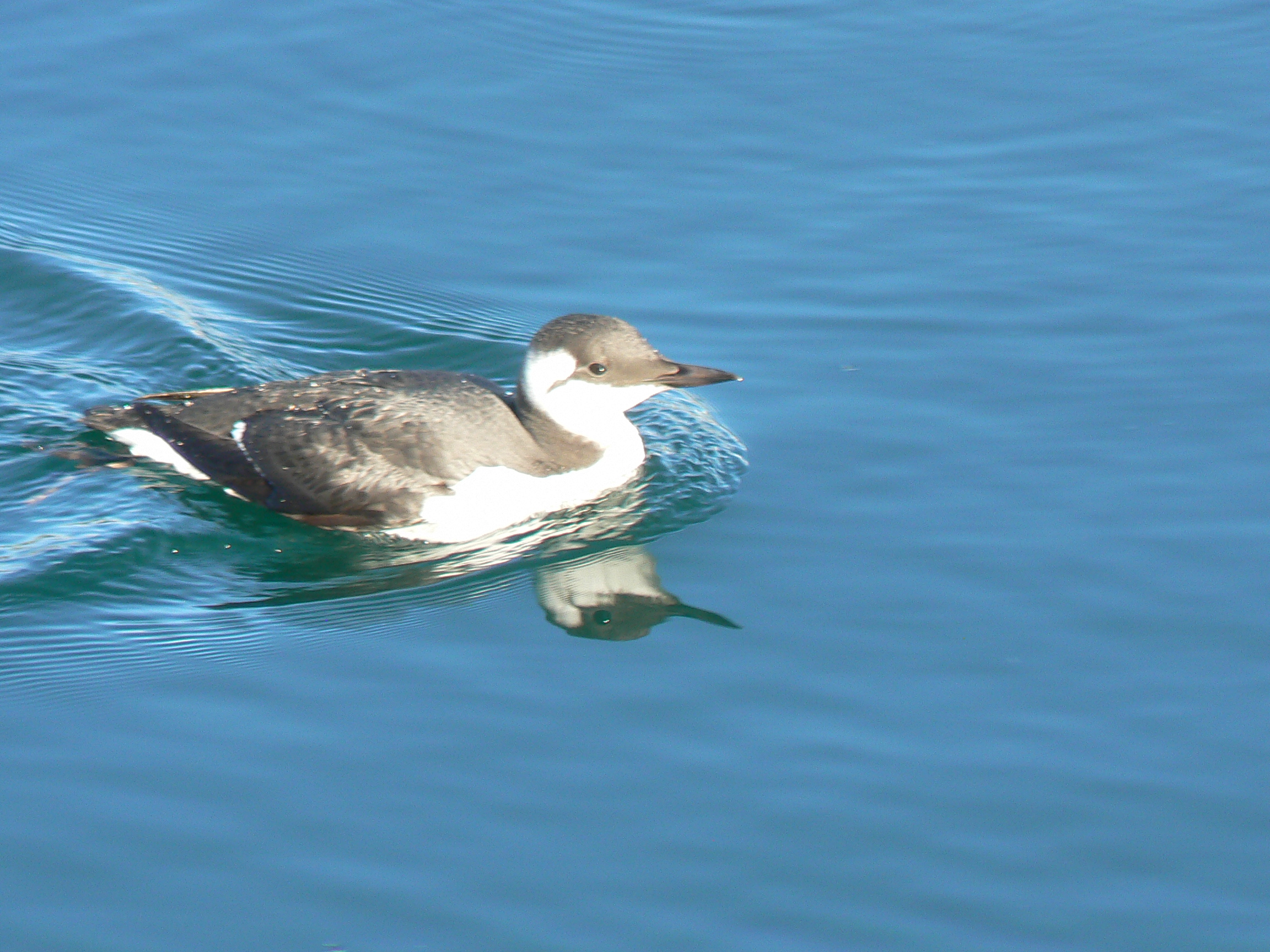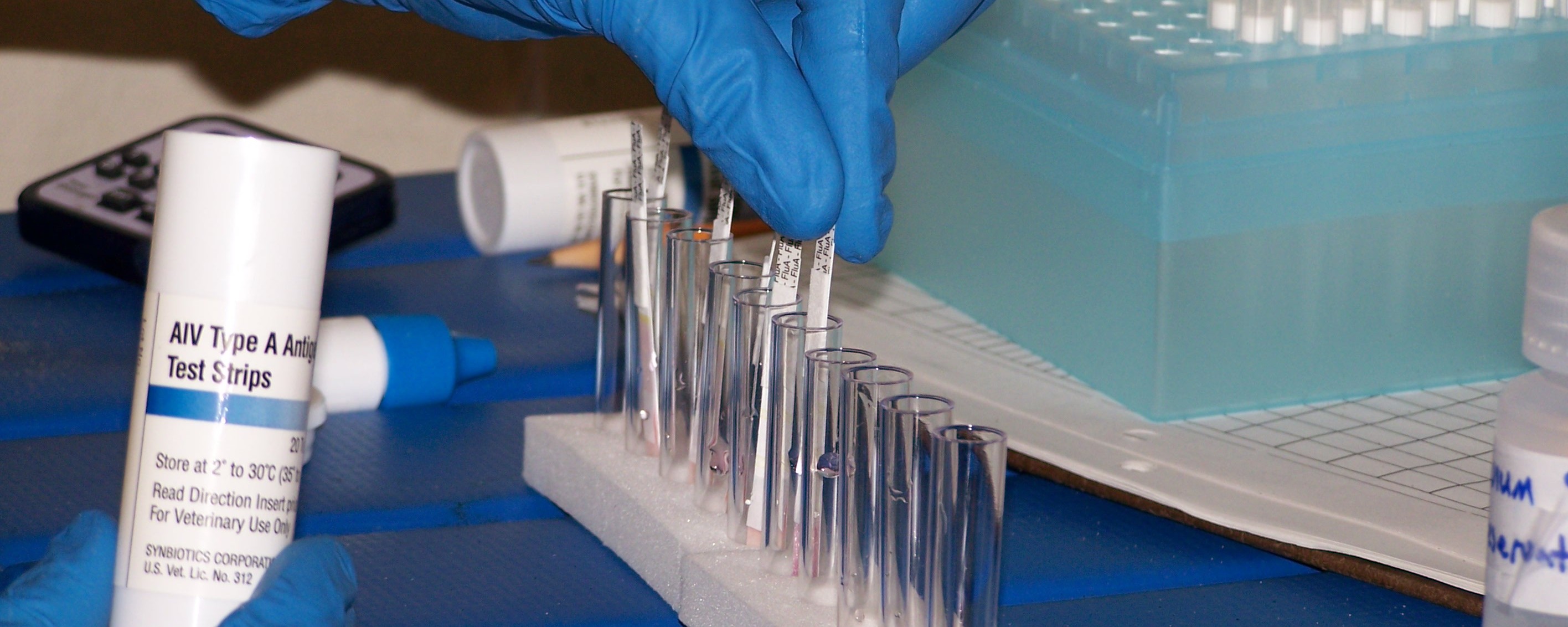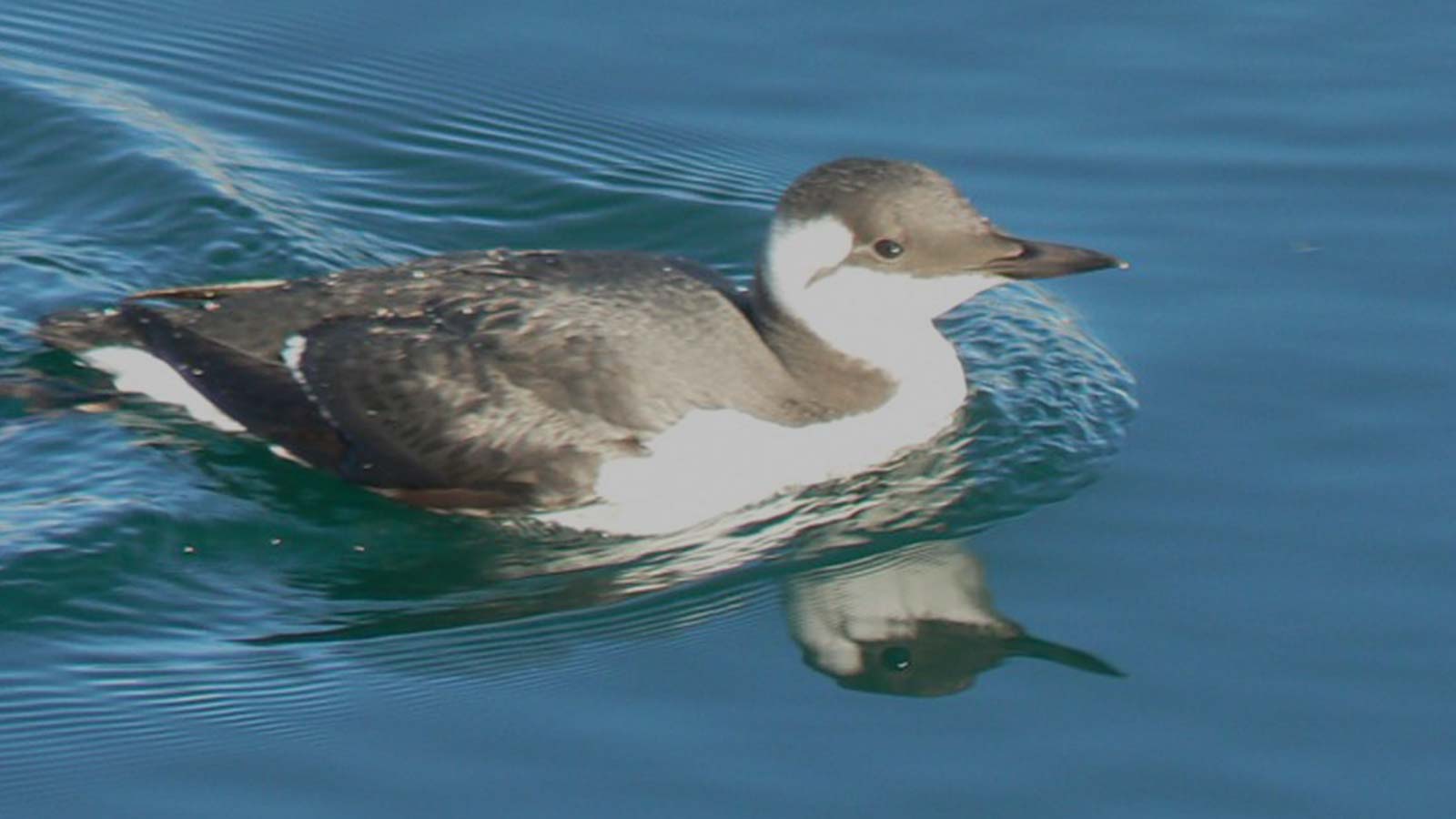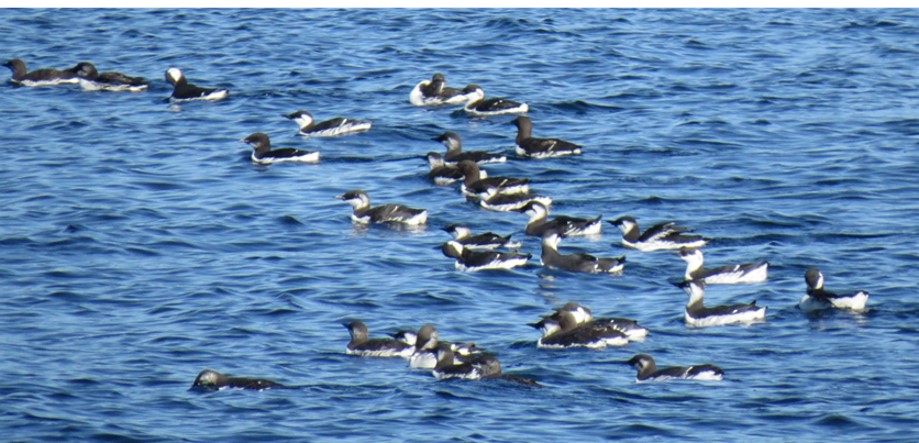
PROGRAM
Seabirds
Prince William Sound hosts a great variety of seabirds throughout the year. Some, such as the Arctic Tern, travel long distances to the Sound to breed, before returning to Antarctic waters for the winter. Others, such as the endangered Yellow-billed Loon, are only winter visitors, utilizing the Sound’s sheltered waters and abundant fish to maintain themselves during these energetically demanding months. And some of the more abundant species, such as the Glaucous-winged Gull, Common Murre and diminutive Marbled Murrelet, can be seen in PWS year round. The Exxon Valdez oil spill of 1989 impacted a number of seabird populations and three seabird species are still considered injured by the spill.
Seabird research at the Prince William Sound Science Center has focused on the relationship between herring and seabirds, and whether mammals foraging on herring enhance feeding opportunities for seabirds. Herring play a crucial role in PWS foodwebs and are a dietary component of at least 25 species of our seabirds. The collapse of the herring population in 1993 may have been caused by Exxon Valdez oil spill, and numbers have not recovered since.
Reduced herring availability may be adversely affecting seabird populations. For example, the rapid and unexplained decline in Marbled Murrelets in PWS has coincided with the decline in herring. We continue to investigate these relationships.


